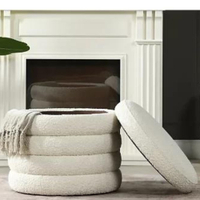What to get rid of for a minimalist bedroom – 9 essentials we need to ditch, according to pros
Professional designers and home organizers explain what we need to get rid of if we want a minimalist bedroom, and why this clutter has no place in our sleep space
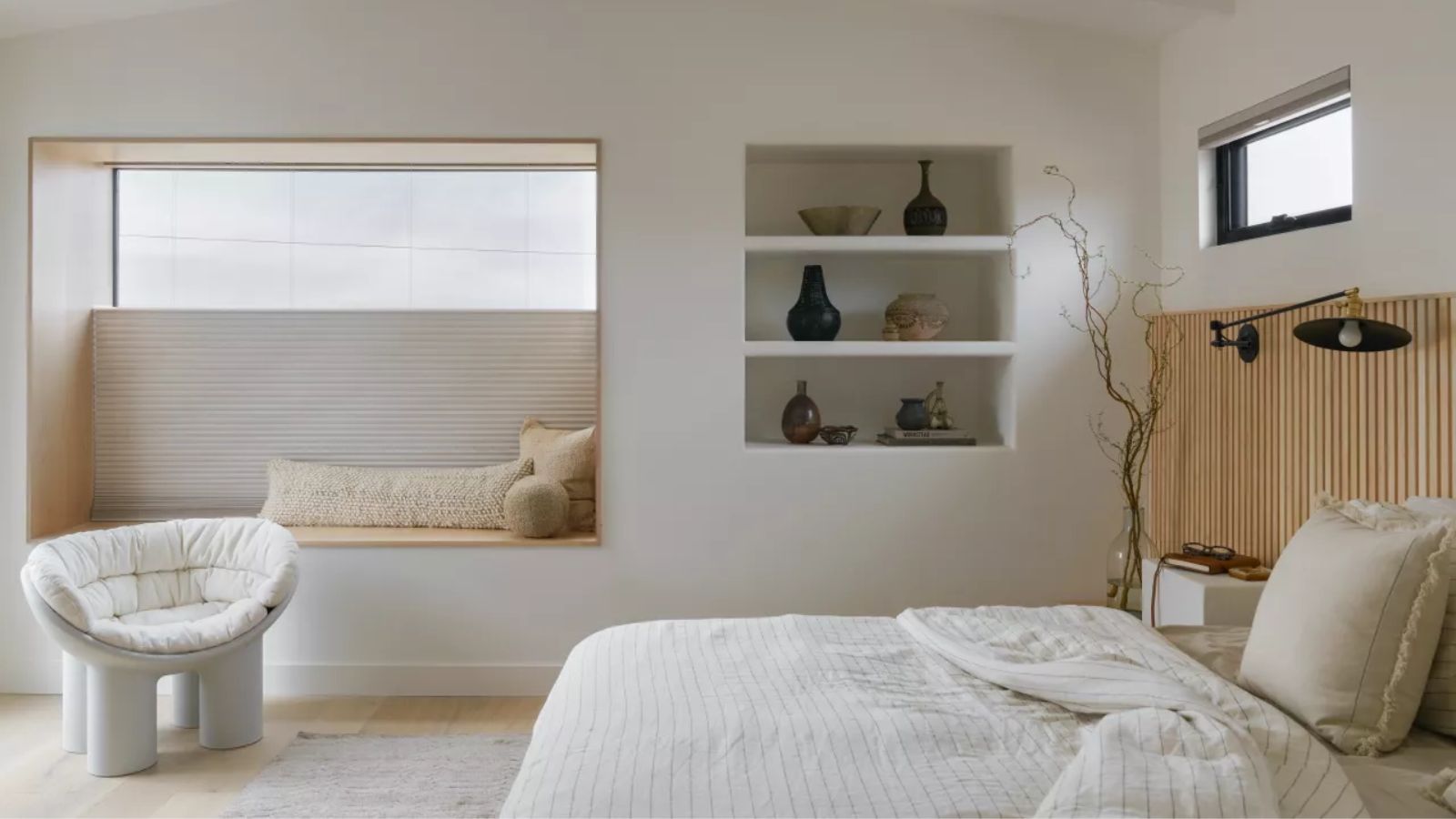

Even those of us who love decorating with color and pattern in our living spaces can appreciate a more calm and minimalist approach to the bedroom.
Of course, minimalist bedrooms don't have to be stark white with only a bed and a dresser, but there are a few bedroom decluttering rules worth bearing in mind if you want to create a soothing sleep space.
Especially if you are rethinking your bedroom to help sleep better. Here, professional home organizers and designers have shared the nine things to get rid of for a more minimalist bedroom.
What to get rid of for a minimalist bedroom
Simple bedrooms have a whole host of benefits for our health and well-being and are worth considering if you have been finding it difficult to relax at night, begins Victor Cheung, Feng Shui expert, designer, and founder of Feng Shui Nexus.
Not only does a visually uncluttered space remove distractions to promote restful sleep, but the calmness and simplicity of a minimalist environment enhance relaxation. ‘Additionally, minimizing the presence of dust and promoting better air quality contributes to a healthier sleeping environment,’ he adds.
‘Moreover, a minimalist approach to your bedroom fosters mindfulness and intentionality. By intentionally curating your space and keeping only what is essential and meaningful you cultivate a sense of gratitude and contentment.’
With that in mind, here is what the experts wish we left at the bedroom door.
1. Electronics
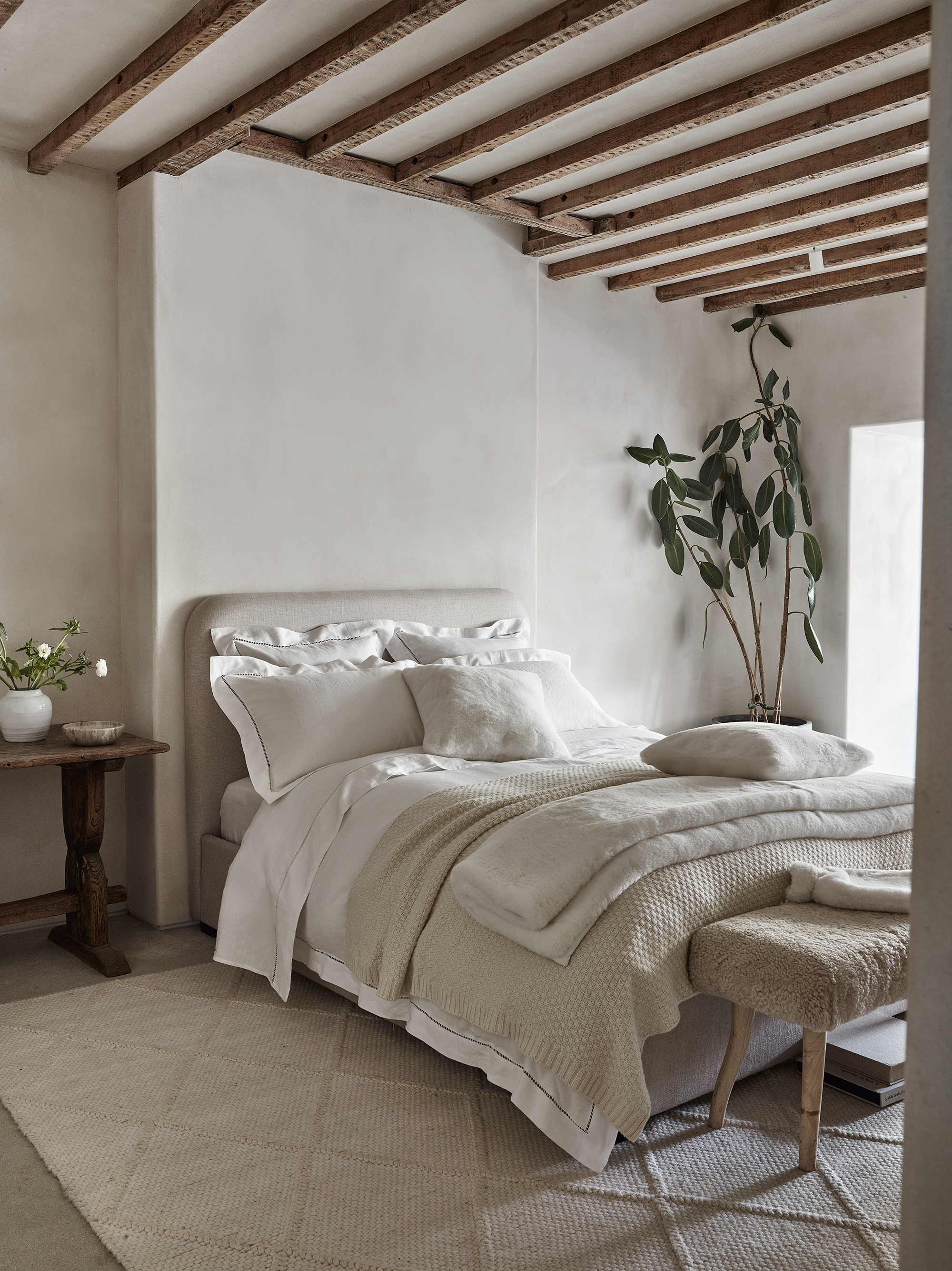
If you have ever dreamed of recreating one of the many aesthetic bedrooms from Instagram or Pinterest, you may have noticed the lack of any electronics, from cords to TVs.
Stephanie Calderon, principal designer and founder of Stephanie Calderon Interiors believes that TVs have no place in the bedroom, admitting that it may be a touchy subject. ‘Aside from its potential to negatively impact sleep quality, it can draw attention away from other design elements or focal points and make a space feel more cluttered,’ she shares. ‘We prefer to design without TVs in the bedroom if we are allowed the option. If not, we try to find somewhere where we can close the TV away when it is not being used, such as a closet or cabinet to reduce its impact.’

Stephanie Calderon is the founder and principal designer at Stephanie Calderon Designs, based in North Carolina.
2. Furniture that doesn't have storage
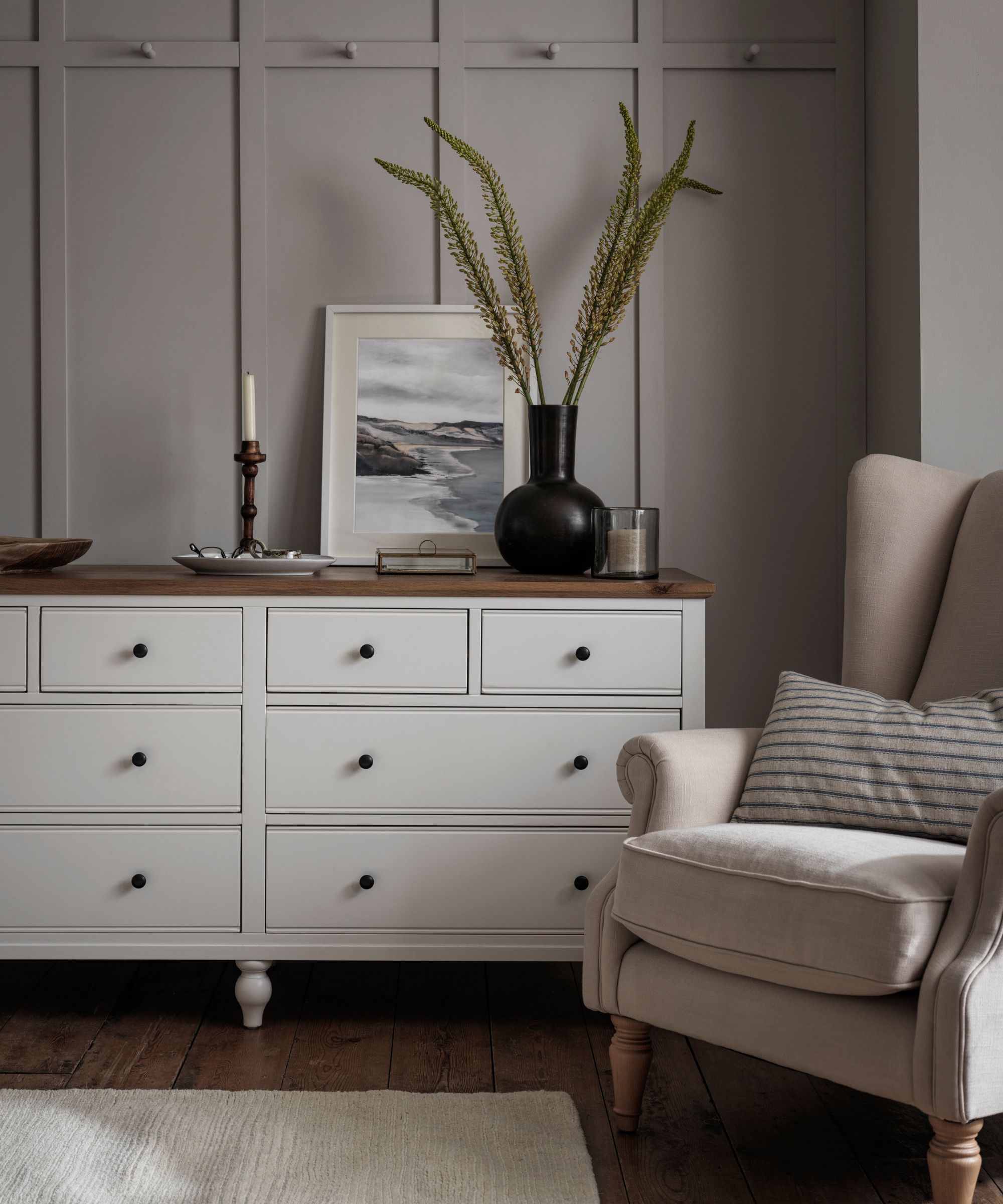
When decorating a minimalist space, it is important to be able to hide your clutter – unless you are planning on adopting a true minimalist way of life and cutting back on everything you own.
To make this easier, Amy Berryhill, founder and chief organizer at Spiffy Chicks suggests getting rid of any furniture that does not offer additional storage.
‘If you just have a flat surface, items can pile up over time. A wide nightstand with drawers is my favorite item of bedroom storage, so you can put most items away and only have a few decorative items on top. A calm, relaxing environment has also been shown to improve your quality of sleep – and who doesn't want that?’
That being said, keeping absolutely everything hidden away with storage capabilities can overwhelm the space too, tipping the scale too far the other way, as Victor Cheung points out. He recommends ditching ‘excessive storage containers or bins that don't serve a specific purpose or do not fit in existing furniture.’
Round Storage Ottoman | Was $273.99, Now $159.99 at Ashley
This storage ottoman stool is perfect for adding in more clutter-hiding spots while keeping your furniture multi-functional. Place it near your closet to help you get ready in the morning, or near a mirror as a hair and make-up stool.

Amy’s pursuit of a better life balance led her to step away from the corporate world into professional organizing. Her deep passion for helping others and organizing spaces made this career the perfect fit! Today, Amy’s neat and tidy nature and ability to share her personal story make it easy to connect with her clients.
3. Paper clutter
Bedrooms may not be the first place you take your mail to read, but they can become littered with magazines and receipts that we pull from our purses after a shopping trip. Getting rid of paper clutter is an ongoing task to keep on top of, as it builds up quickly.
‘I encourage my clients to deposit all catalogs and junk mail into a recycling bin before entering their homes,' comments Amy Bloomer, professional organizer and organizational psychologist, and founder of Let Your Space Bloom.
'Place magazines where you will read them (on a bedside table) and commit to recycling them immediately after reading them. If there is any information that you want to save, take a picture of it and move on.’

Amy started organizing as soon as she could walk, sorting her toy chest by size, color and function. Her innate organizational acumen led to success in academics and extracurriculars, all the way up to a Masters in Organizational Psychology from Columbia University. Since 2016, when Amy brought her passion for helping people flourish through organization to the Baltimore market, she's been in thousands of homes, helping families, professionals and retirees to transform their space, and in turn, their lives.
4. Excess blankets and pillows
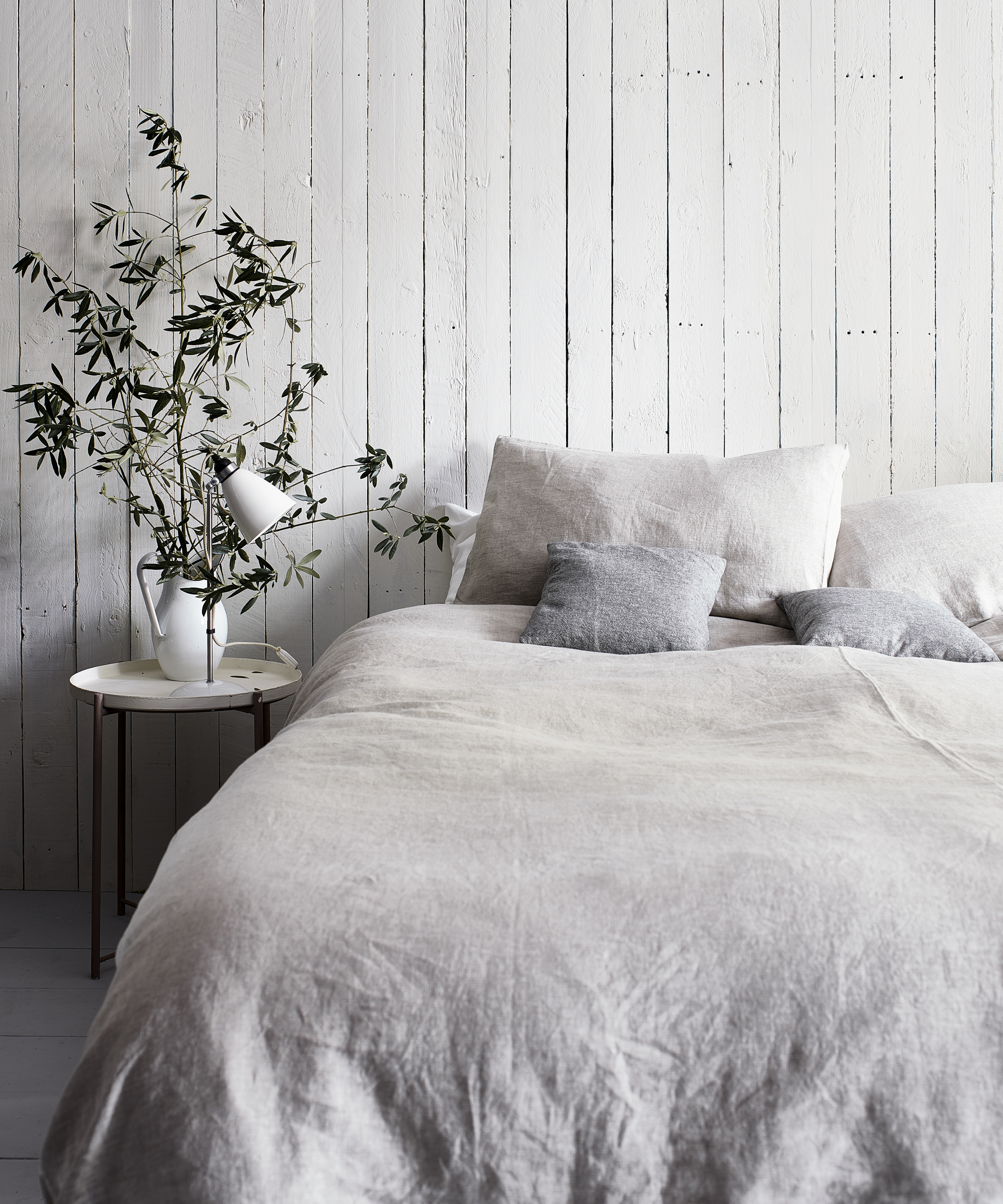
In an effort to make a bedroom cozy, we have all been guilty of overspending on blankets and pillows to layer up and style our bed like a five-star hotel. After a while, these throws end up in a pile unused when the novelty of making the bed with them all every single day wears off.
Amy Bloomer suggests ditching the worn-out pillows and blankets, either taking them to a fabric recycling point or donating them if they are not in bad condition. ‘Bring old towels, blankets, and pillows that can be taken to your local animal shelter or zoo, where the animals will be able to make good use of them,’ she adds.
Be realistic about what you will have time and energy to fluff and arrange every morning and edit down your collection.
5. Excess decor that doesn’t hold significance
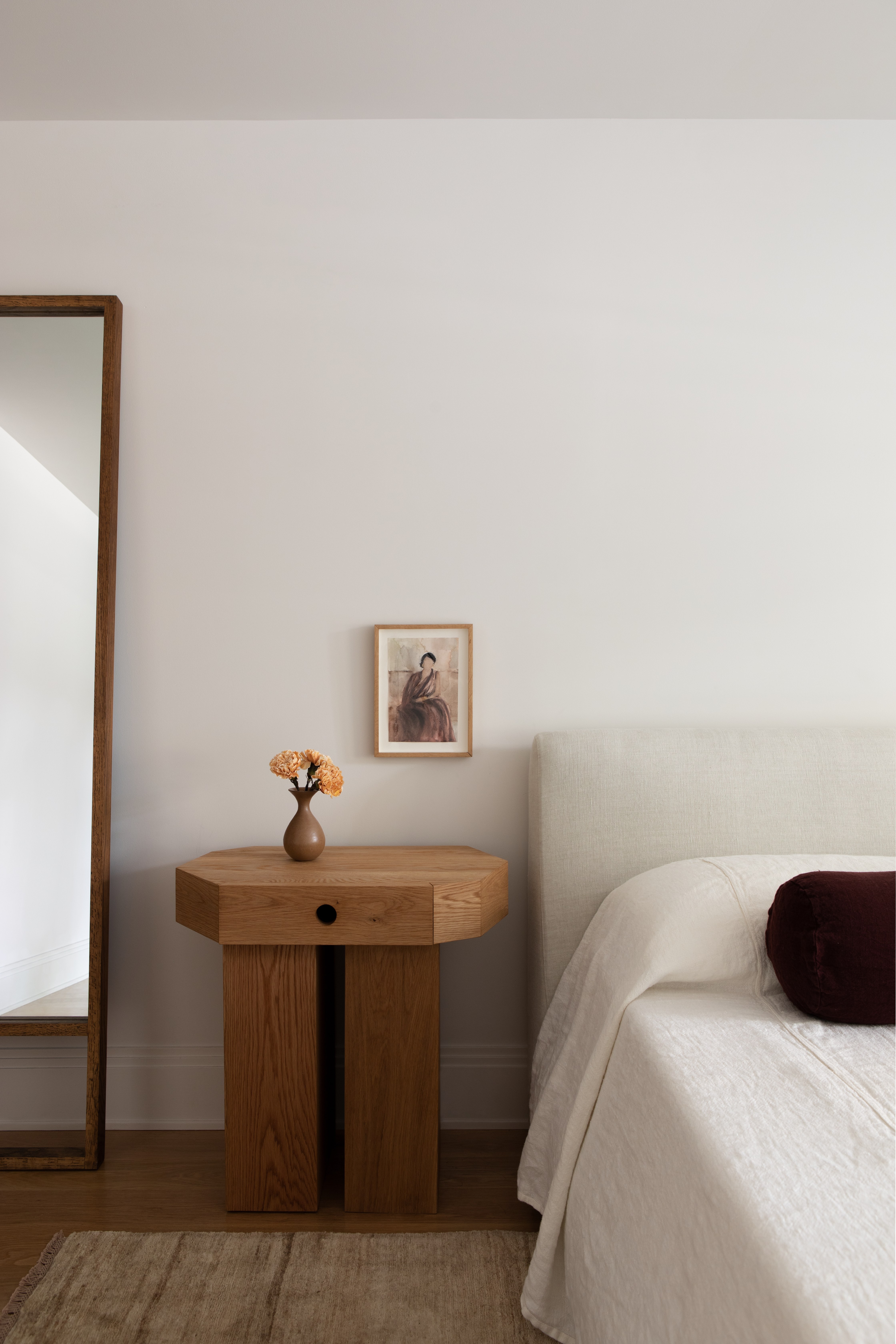
Our bedrooms need a little decor to add personality and warmth, but that doesn't mean that we need to hold on to every little trinket we have ever been given, Victor Cheung, Feng Shui expert and designer advises. For a minimalist space, we should really be keeping everything that isn't essential off of our surfaces.
‘Having too many wall art pieces, decorative items, or unnecessary furniture can create visual chaos and disrupt the overall harmony. By simplifying the visual space, we can establish a clean and uncluttered atmosphere that fosters a peaceful ambiance.’
6. Overflowing bookshelves
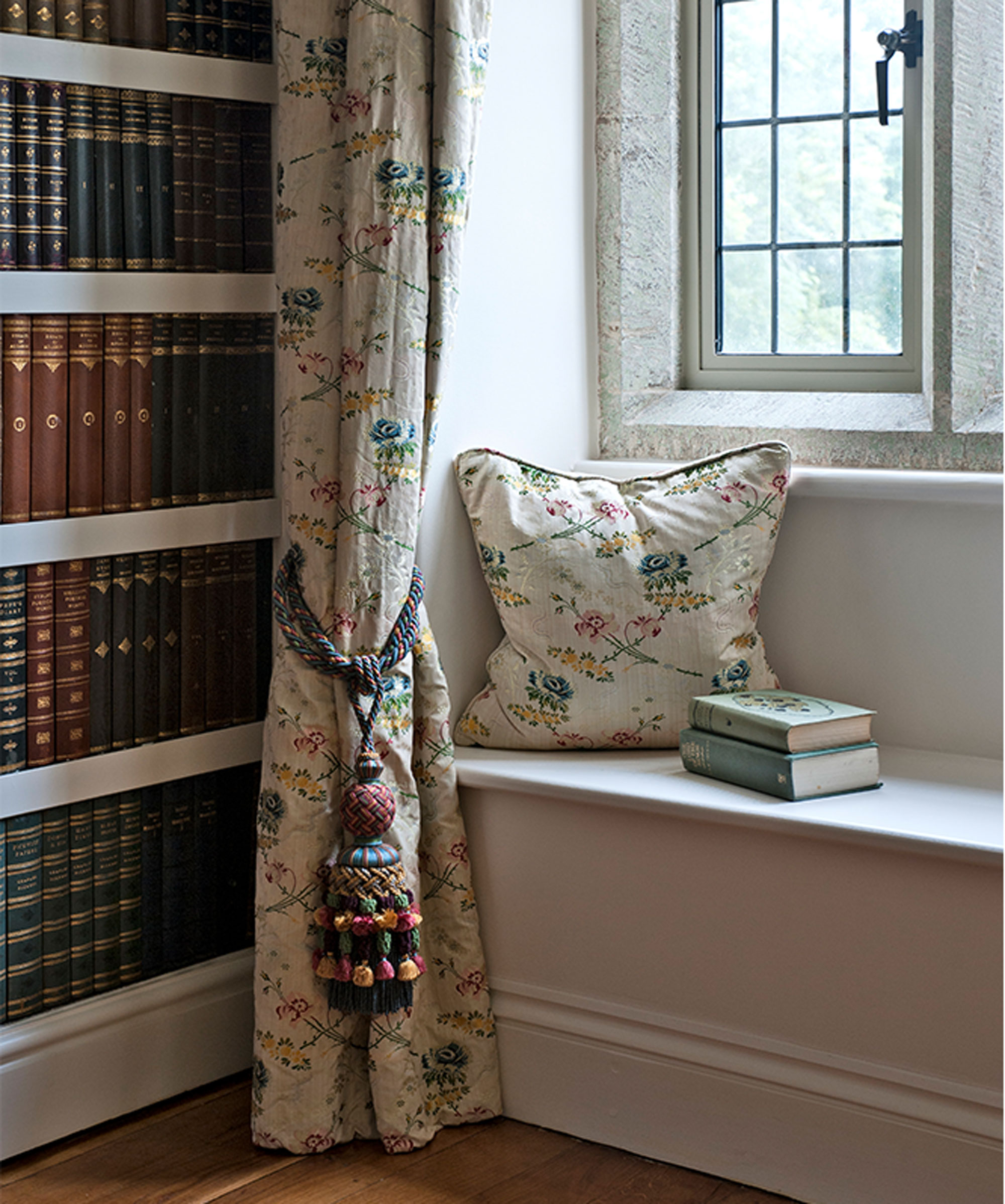
There is nothing as relaxing as reading a good book before bed, but overflowing bookshelves are the epitome of chaos (especially when you haven't read half the tomes on there.)
One of the best steps you can take to create a minimalist bedroom is to declutter your books, or even move your shelves elsewhere, suggests Amy Bloomer, professional organizer. ‘Keep your favorites and donate the balance of the books to your local library, school (where appropriate), or charitable thrift store.’
7. Everything on your nightstand

Bedroom nightstands are magnets for clutter, even though they are, arguably, the most important place to keep clean in your room, says Stephanie Calderon, designer.
‘Really you shouldn't have any decor on your nightstand at all, keeping it clear so that you can pop down the essentials, such as a drink, a book, and some glasses if you need them,’ she advises. ‘For those who have additional bedside necessities, we always suggest nightstands with drawers to hide the excess clutter.’
8. Clothes you no longer wear

You are probably tired of hearing it by now, but decluttering clothes is essential for a minimalist space – even if you are not looking to have a minimalist capsule closet.
The clothing you no longer like or wear is an obvious target for this, but anything that doesn't fit into the closet or dressers needs to go too, Victor Cheung, feng shui expert, and designer cautions.
‘Keeping a minimal and organized collection of clothing avoids a cluttered environment and contributes to a sense of calmness and order, and having excess garments strewn around your room is detracting from that.’
If you have space in your home, it is a good idea to consider moving your clothing out of your bedroom entirely and opting for a separate dressing room instead. This can help to separate the chaos of the day from the sleep space and make for a truly relaxing environment.
9. Highly saturated colors
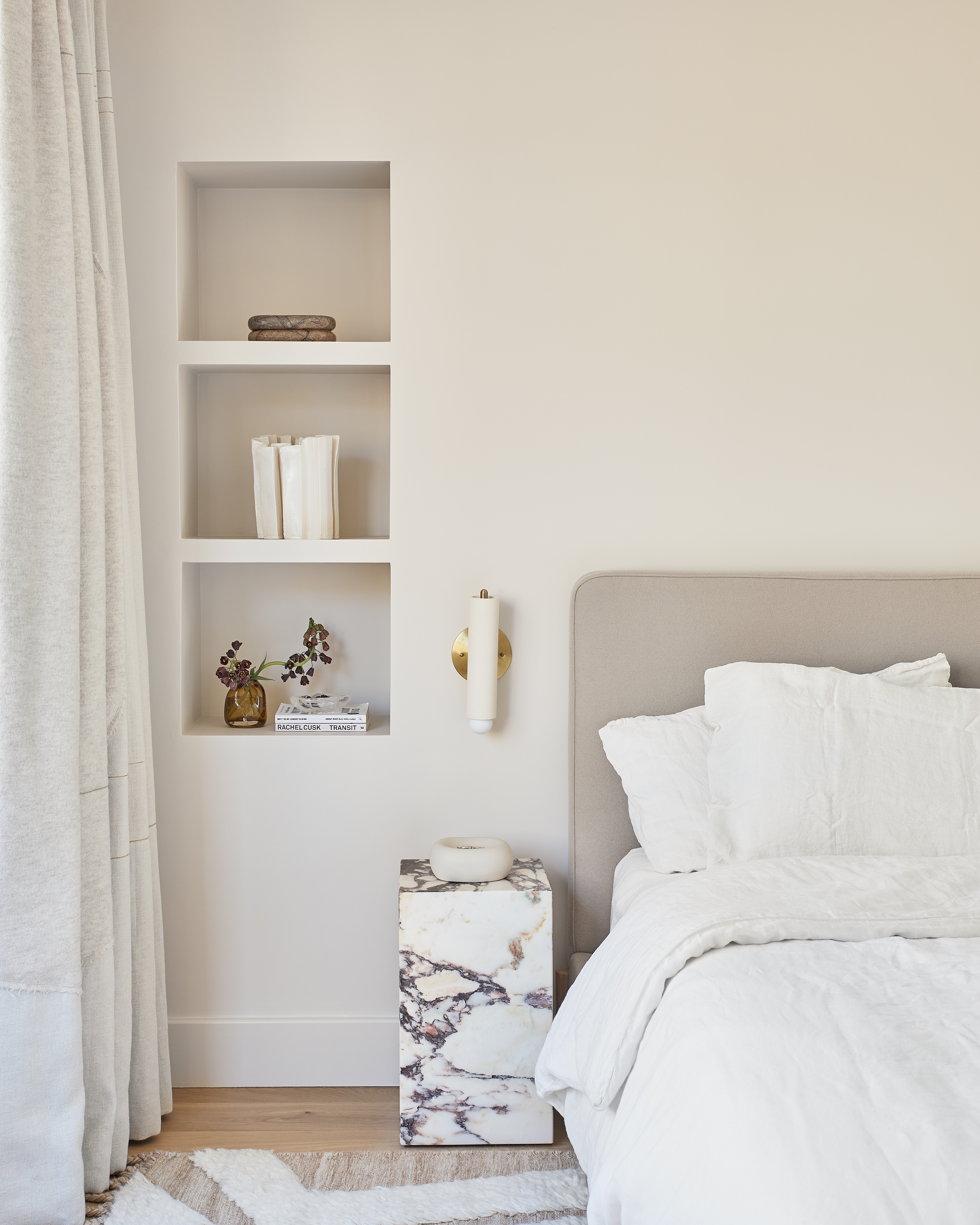
When designing a bedroom, you should really aim to pick the most relaxing colors when putting together a palette, as this can help to achieve that sleek minimalist aesthetic, suggests Courtney Finley, professional organizer, and designer and owner of Organized Designs.
‘You can paint your walls a soothing calming color such as a creamy white or even a pastel color – it doesn't have to be bleak,’ she advises. ‘Greens, blues, and purples are common for this, but you could get adventurous and opt for limewashing, a painting technique proven to aid relaxation,’ she adds.
FAQs
What should a minimalist bedroom have?
An extremely minimalist bedroom should have at least a bed, a storage unit for clothing, nightstands, and a light source to allow for reading in the evening. From there, you may choose to add in a few personal mementos, playing with different degrees of minimalism to create a space that makes you feel safe and cozy, as well as relaxed.
What is the 90 rule in minimalism?
The 90-day rule in minimalism dictates that when decluttering, you should only keep hold of things that you have used in the past 90 days, or will use in the next 90. This allows you to keep hold of seasonal items while singling out those that you promised yourself you would use but never touched. It can be a hard but useful exercise to try if you are finding it difficult to let go of items you are worried you will need again in the future. If you haven't used it by now and have no plan to, you likely don’t need it.
As well as considering what to remove, think about what you are bringing in. Before purchasing a new nightstand or chest of drawers, for instance, measure carefully, and consider exactly where it will go and how it will be used. If you cannot think of an exact spot for it, don't bring it through your front door.
Given how quickly our kitchens can become cluttered, it's worth getting rid of items for a minimalist kitchen, too.
Sign up to the Homes & Gardens newsletter
Design expertise in your inbox – from inspiring decorating ideas and beautiful celebrity homes to practical gardening advice and shopping round-ups.

Chiana has been at Homes & Gardens for two years and is our resident 'queen' of non-toxic living. She spends most of her time producing content for the Solved section of the website, helping readers get the most out of their homes through clever decluttering, cleaning, and tidying tips. She was named one of Fixr's top home improvement journalists in 2024.
-
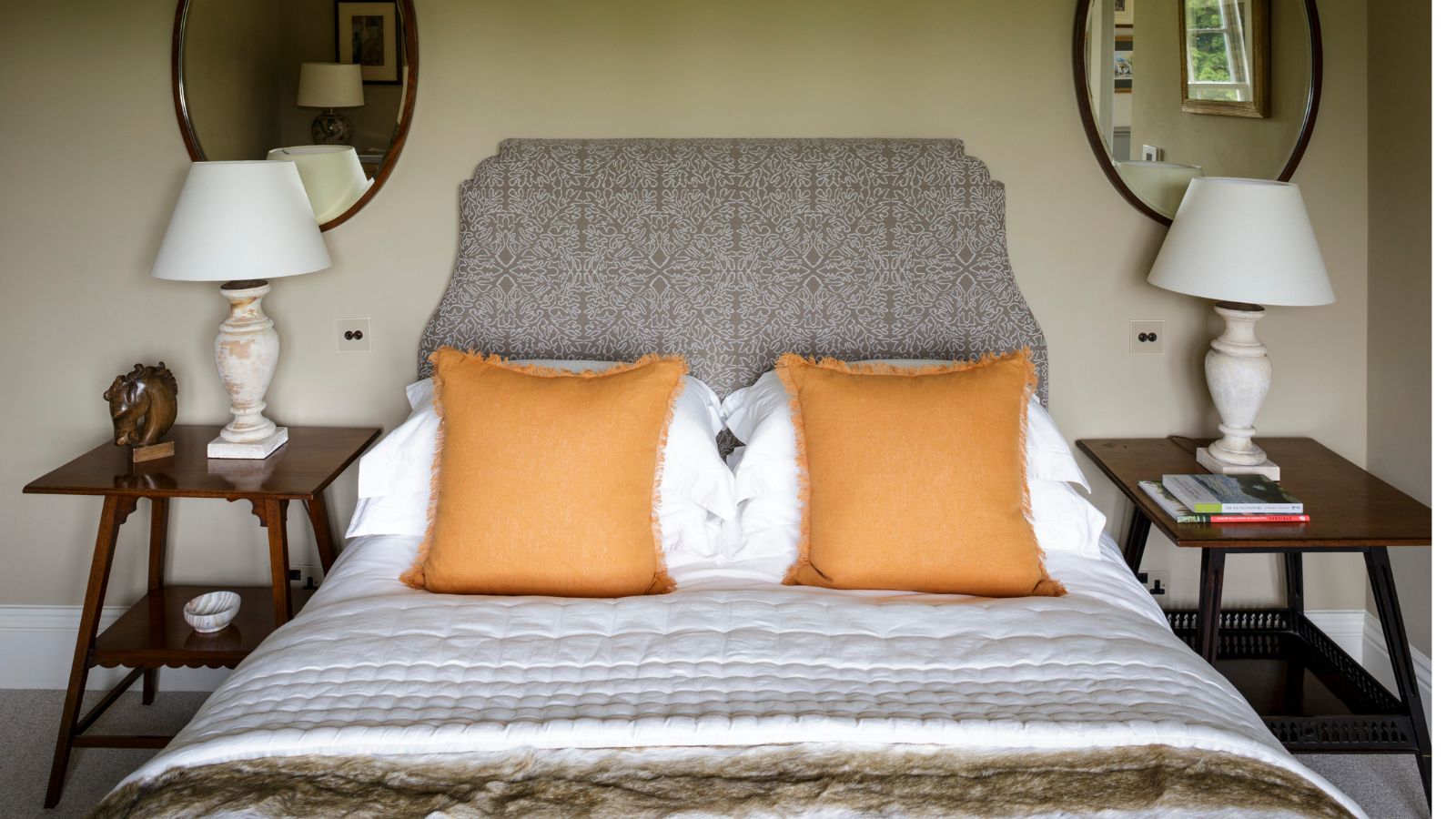 5 surprisingly practical ways to re-purpose old bed sheets for cleaning, decluttering and storage at home
5 surprisingly practical ways to re-purpose old bed sheets for cleaning, decluttering and storage at homeDon't ditch worn-out bedding – there's life in them yet
By Natasha Brinsmead
-
 How to grow a cactus from seed – 6 easy, expert-approved steps for succulent success this year
How to grow a cactus from seed – 6 easy, expert-approved steps for succulent success this yearIf you love succulents, why not learn how to grow a cactus from seed this year?
By Lola Houlton
-
 7 dorm room organizing rules for less clutter and more space
7 dorm room organizing rules for less clutter and more spaceExperts offer their top tips for creating a well-organized dorm room, no matter the size, space, or layout.
By Ashley Chalmers
-
 How to maximize storage in a small or shared dorm room, according to pro organizers
How to maximize storage in a small or shared dorm room, according to pro organizersFind out all the hidden storage zones you might never have noticed
By Ashley Chalmers
